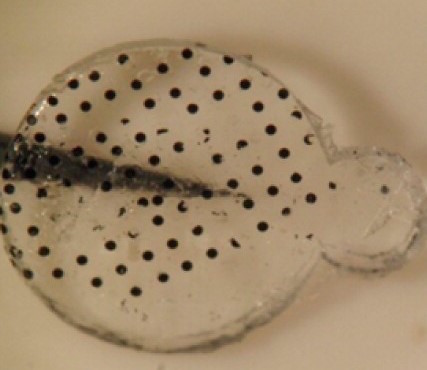For centuries, humans have burned coal to warm themselves. We’ve used diamonds to cut through solid stone. Now, carbon may be the key to combatting the effects of macular degeneration, the leading cause of vision loss among people 60 and older, according to the National Eye Institute (NEI). 
An international team—led by Prof. Yael Hanein of Tel Aviv University's School of Electrical Engineering and head of Tel Aviv University's Center for Nanoscience and Nanotechnology and researchers from Tel Aviv University, the Hebrew University of Jerusalem, and Newcastle University in England—has developed a means to help individuals with macular degeneration. Their work was published on December 2, 2014, in the science journal Nano Letters.
Carbon nanotubes are a type of fullerene, which is a molecule of carbon in a hollow 3-D form. They are known for their high tensile strength, which is so great that it can be used for body armor. Although Harold Kroto, Robert Curl, and Richard Smalley discovered such small-scale carbon structures in 1985 and won a Nobel prize for it, only in the past decade or so have carbon nanotubes become a commonly known material. Now, IBM is experimenting with nanotubes to make nano-scale transistors that outperform traditional silicon, and the fullerens were alloyed into the bicycle that won the 2006 Tour de France. Clearly, nanotubes have some impact on the high-tech aspects of our culture. But can they help repair the toll of macular degeneration.
The macula is a part of the eye located near the center of the retina which allows us to see straight ahead. Macular degeneration occurs when drusen, which are yellow spots under the retina, grow in size. Although small drusen are a regular part of the aging process, larger ones can obscure and block parts of vision, the NEI states.
The new device essentially functions as an artificial retina, which is the part of the eye that is responsible for determining light and color. The human retina has two types of receptor cells: Rods, which are responsible for light, and cones, which handle color. The malfunction of either of these can lead to serious vision impairment, including blindness. The retina is connected to the optic nerve, which transfers information to the brain. The retina’s purpose is to take the light diffracted by the lens, and piece it together into a picture, which is essentially how you are reading this article.
To make the artificial retina, the nanotubes are joined together with semiconductor-based carbon nanorods. A nanorod is a 1-100-nanometer-type of nanoscale object. The semi-conductive properties of these nanorods allow them to respond to light, as the absorption of light causes a small electrical field to be generated, triggering the neurons. A film made of nanotubes and nanorods would not be capable of replacing the rods and cones of the actual retina. However, it is significantly lighter and less cumbersome than the mess of wires and metals used in present designs for artificial retinas, and holds promise for elaboration and continuation.
Although the nanotube is not, in itself, capable of replacing the retina, the film has induced neuronal activity in response to violet light when tested with chick retinas. The retinas are not yet light sensitive, which means that, for those with age-related macular degeneration, there is potential for one day replacing the damaged retina. Steve Jobson

This work is licensed under a Creative Commons Attribution-NonCommercial-NoDerivs 3.0 Unported License













